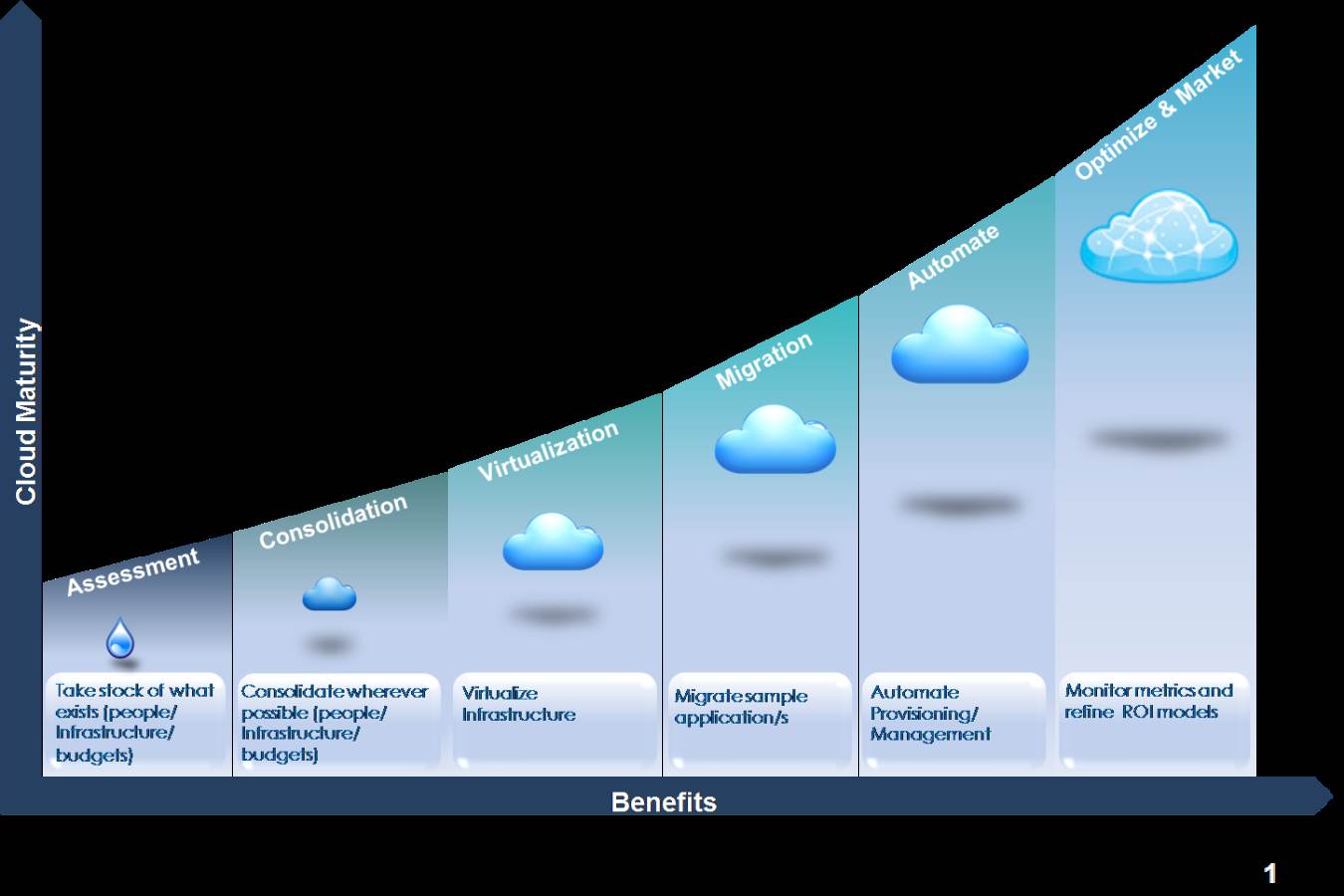Private cloud setup in six easy steps
Private cloud setup entails a systematic progression from assessment to optimization. This tip helps smooth your private cloud setup adoption journey.
It is important to understand the various stages of the cloud maturity model as you embark on your private cloud setup journey. This tip will cover the typical scenario for private cloud setup implementation, applicable to most medium and large organizations.
1) Assessment
The first step for an organization going in for a private cloud setup is assessment. Here, the enterprise assesses existing infrastructure, people and other assets with respect to its IT portfolio. IT assets are benchmarked in terms of performance, availability and scalability, so that a cost-benefit analysis can be carried out based on the target cloud platform. An ROI model and a high-level strategy document should be prepared.
2) Consolidation
The next step in private cloud setup is consolidation. All avenues for consolidation of IT infrastructure and budgets should be explored and implemented. For instance, if an organization has multiple data centers, it can consider discarding some of them. The organization should then consolidate the data in a central location to cater to requirements for the entire region. The central data center must have cloud properties, so that it is robust enough to cater to all the data from different regions.
3) Virtualization
After consolidating IT assets, consider virtualization of IT infrastructure. This step in the private cloud setup journey will help optimize consolidated infrastructure. Generally, hardware sizing is done with a view to peak requirement/usage of that hardware. Organizations should ascertain the extent to which hardware is underutilized.
For instance, if during assessment it is found that only 10% of the overall computing power is being utilized, then ways to utilize the remaining 90% of the capacity must be found. Here, virtualization solutions such as VMware hypervisor could help. By doing this, the organization can maximize the usage of the IT infrastructure and exploit underutilized resources on the way to private cloud setup.
4) Migration
Application standardization
Once the infrastructure is virtualized and the data center consolidated, consider application migration. Applications are assessed from a functional and non-functional perspective and accordingly selected or rejected for migration to the cloud. Application architecture standardization is an important factor. This involves building standard reference architecture, comparing it with the current application architecture, and establishing the gap between the two. Any anomalies have to be eliminated at this stage, modifying the applications as required, to conform to the reference cloud architecture.
Application performance
On a virtualized cloud platform there are certain qualities that are expected from applications. Let’s assume the application accesses a file using a specific URL and a specific path. The cloud has no standard specific location of files because if the machine goes down, the file is lost and the application too goes down. On a cloud platform you cannot expect the application to access the file using a uniform path, when the same file can be located in multiple places on the cloud. Thus the application needs to be modified such that it doesn’t expect the file to be in a specific location.
5) Automation
The next step in the private cloud setup journey is automation, wherein qualities such as self-provisioning are incorporated in applications. For instance, if load on an application unexpectedly increases while it is running, a traditional environment would demand procurement of a new server, installation of the application and connection to the network, for the additional load to be handled. However in a private cloud setup, the application should have the self-scaling capacity to form a new virtual machine (VM), install itself in the virtual environment and commence servicing the new request.
Automation could also be carried out with respect to management and monitoring. In case a machine is down, an alert can go out automatically to the administrator. Ideally, without manual intervention, the cloud could create a new instance on its own and start the application as required. Automation built into applications thus enables self-healing and scaling.
6) Optimization
The move to a private cloud setup is invariably prompted by potential cost and performance benefits. The final, optimization stage involves scrutiny of the metrics. After three months of running the applications on the private cloud setup, observe the metrics generated and evaluate whether targets are being met. Based on this analysis, modifications can be incorporated to attain the maximum benefit. This is the highest maturity level of the private cloud setup journey.
 About the author: Siddharth Jaiswar is a senior technical architect with Syntel’s Cloud Labs. He is a Sun Certified Enterprise Architect (SCEA) with extensive experience in designing and architecting Java/J2EE solutions.
About the author: Siddharth Jaiswar is a senior technical architect with Syntel’s Cloud Labs. He is a Sun Certified Enterprise Architect (SCEA) with extensive experience in designing and architecting Java/J2EE solutions.
(As told to Mitchelle R Jansen.)










